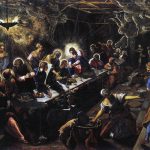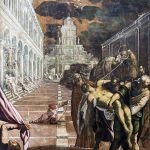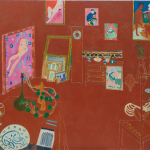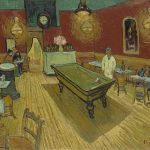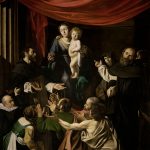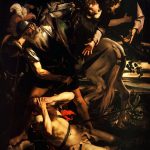‘Citizen Kane’ (1941) is considered one of the greatest films in cinematic history. It is Orson Welles’ greatest accomplishment, and his ultimate downfall. The story-line is easy to follow; we follow the life of media magnate Charles Foster Kane (an obvious parallel to William Randolph Hearst). This is done through flashbacks/old newsreels, and discussions by reporters with Kane’s associates. It’s an obvious indictment of powerful figures who influence culture by any means (‘Rosebud” was supposedly Hearst’s nickname for a certain part of his wife’s anatomy).
But we’re primarily watching it for its aesthetic qualities … particularly value and space. The cinematography and photographic elements of the film arc stunning even today. Pay close attention to how Welles’ sets up each scene; there are layers of information, and each shot is tightly composed. There are numerous shots where we -the viewers–are literally looking over the shoulder of one of the conversants in the scene, creating an extreme foreground space which directs us towards the ‘main’ subject of the scene, the ‘interviewee’, which would be the middle ground. But also pay attention to how the ‘background’ space always informs what’s going on in front of it. Sight-lines are established, and texture helps dramatize each scene. Welles uses many devices to create hyper-situations, such as exaggerated scale and bizarre camera angles. These fictional devices can be seen in traditional Renaissance paintings such as Tintoretto, Caravaggio, Velasquez, and Van Eyck.
Your assignment is to create a drawing which uses a similar sense of dense space to classical images such as Tintoretto’s and Welles’ ‘Citizen Kane’.
Use found images to create a working collage which you will then translate into an 18″ x 24″ drawing done with graphite. Begin by finding an image which will be your ground, and will represent your deep background element. Add 2-4 more layers on top of this image (make a middle-ground), building towards the foreground. YOU WILL TURN IN THE COLLAGE/SOURCE IMAGE ALONG WITH YOUR DRAWING.
After making the collage, do some preparatory drawings in your sketchbook BEFORE YOU GO TO YOUR LARGE PAPER. Think of where you want to direct the viewer and the levels of space. You are not copying the collage, but using it as your main reference and source for the drawing.
18″ x 24″ WHITE DRAWING PAPER with GRAPHITE (6H, 4H, 2H, H, B, @B, 4B, 6B)
COLLAGED SOURCE


